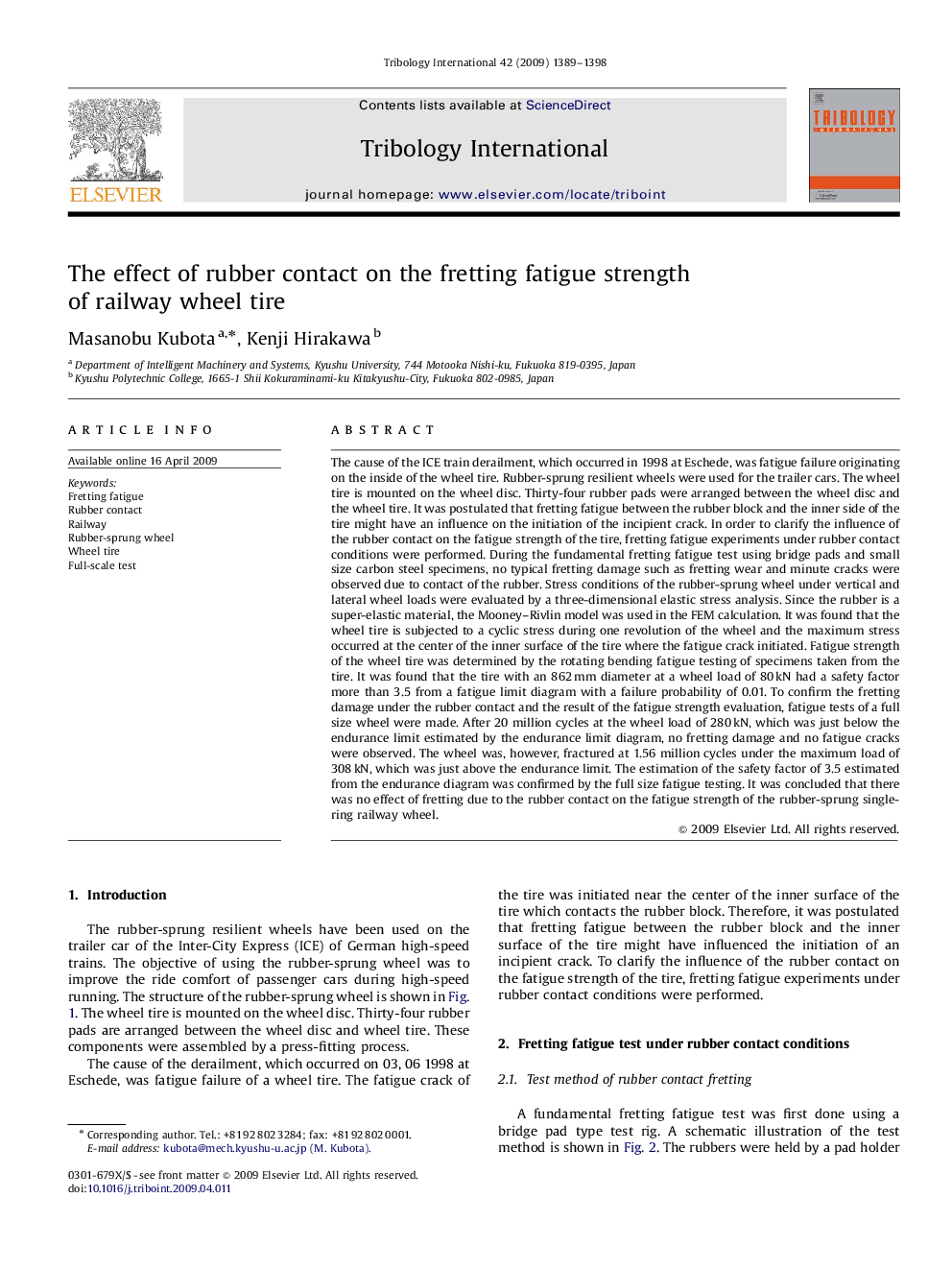| Article ID | Journal | Published Year | Pages | File Type |
|---|---|---|---|---|
| 616141 | Tribology International | 2009 | 10 Pages |
Abstract
The cause of the ICE train derailment, which occurred in 1998 at Eschede, was fatigue failure originating on the inside of the wheel tire. Rubber-sprung resilient wheels were used for the trailer cars. The wheel tire is mounted on the wheel disc. Thirty-four rubber pads were arranged between the wheel disc and the wheel tire. It was postulated that fretting fatigue between the rubber block and the inner side of the tire might have an influence on the initiation of the incipient crack. In order to clarify the influence of the rubber contact on the fatigue strength of the tire, fretting fatigue experiments under rubber contact conditions were performed. During the fundamental fretting fatigue test using bridge pads and small size carbon steel specimens, no typical fretting damage such as fretting wear and minute cracks were observed due to contact of the rubber. Stress conditions of the rubber-sprung wheel under vertical and lateral wheel loads were evaluated by a three-dimensional elastic stress analysis. Since the rubber is a super-elastic material, the Mooney-Rivlin model was used in the FEM calculation. It was found that the wheel tire is subjected to a cyclic stress during one revolution of the wheel and the maximum stress occurred at the center of the inner surface of the tire where the fatigue crack initiated. Fatigue strength of the wheel tire was determined by the rotating bending fatigue testing of specimens taken from the tire. It was found that the tire with an 862Â mm diameter at a wheel load of 80Â kN had a safety factor more than 3.5 from a fatigue limit diagram with a failure probability of 0.01. To confirm the fretting damage under the rubber contact and the result of the fatigue strength evaluation, fatigue tests of a full size wheel were made. After 20 million cycles at the wheel load of 280Â kN, which was just below the endurance limit estimated by the endurance limit diagram, no fretting damage and no fatigue cracks were observed. The wheel was, however, fractured at 1.56 million cycles under the maximum load of 308Â kN, which was just above the endurance limit. The estimation of the safety factor of 3.5 estimated from the endurance diagram was confirmed by the full size fatigue testing. It was concluded that there was no effect of fretting due to the rubber contact on the fatigue strength of the rubber-sprung single-ring railway wheel.
Related Topics
Physical Sciences and Engineering
Chemical Engineering
Colloid and Surface Chemistry
Authors
Masanobu Kubota, Kenji Hirakawa,
